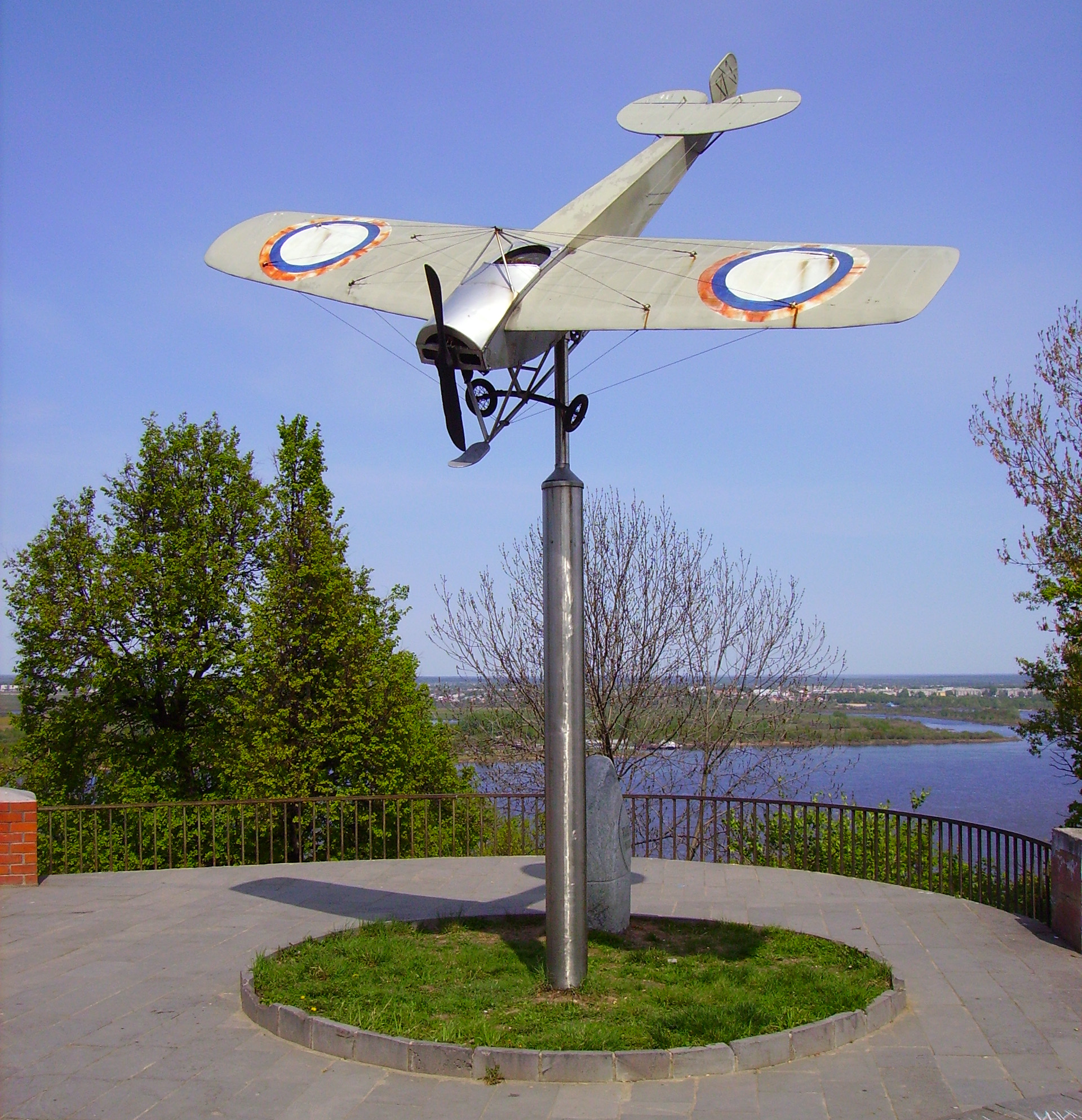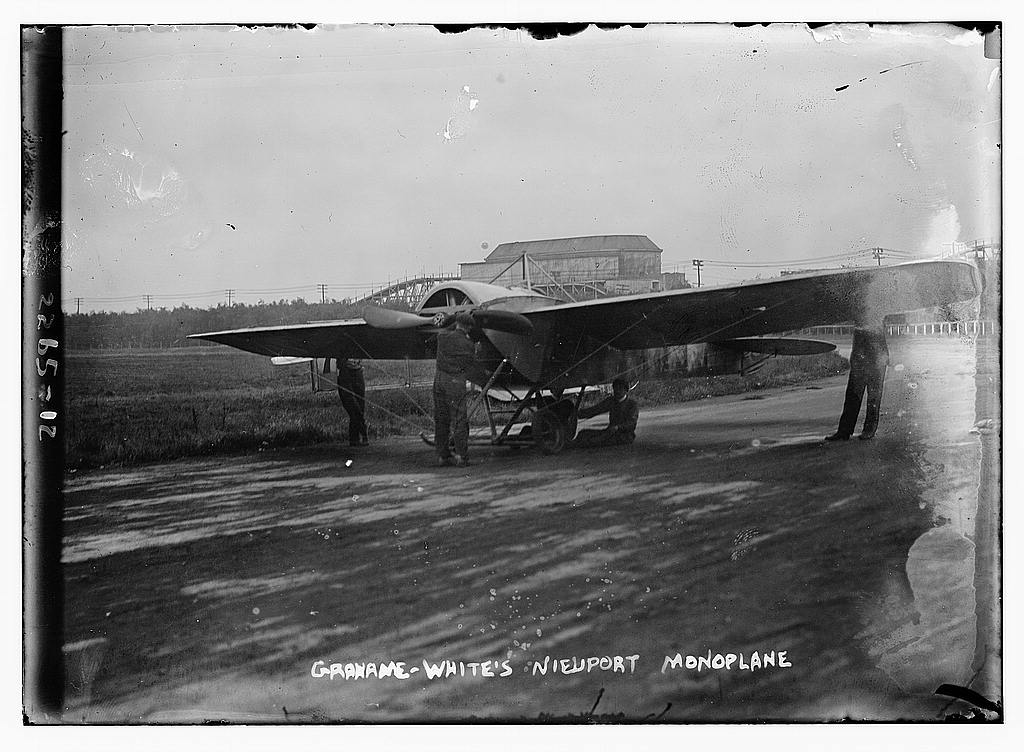Nieuport IV on:
[Wikipedia]
[Google]
[Amazon]


 The Nieuport IV was a French-built sporting, training and
The Nieuport IV was a French-built sporting, training and
 The Swedish Air Force maintained their first model IV in airworthy condition until 1965. This aircraft is now preserved in the Flygvapenmuseum at Malmen near Linköping. The Museo del Aire at Cuatro Vientos near Madrid has a full-scale replica of one of their model IVs.
The Swedish Air Force maintained their first model IV in airworthy condition until 1965. This aircraft is now preserved in the Flygvapenmuseum at Malmen near Linköping. The Museo del Aire at Cuatro Vientos near Madrid has a full-scale replica of one of their model IVs.
 Ottoman Empire
*
Ottoman Empire
*



 The Nieuport IV was a French-built sporting, training and
The Nieuport IV was a French-built sporting, training and reconnaissance
In military operations, reconnaissance or scouting is the exploration of an area by military forces to obtain information about enemy forces, terrain, and other activities.
Examples of reconnaissance include patrolling by troops (skirmishers ...
monoplane of the early 1910s.
Design and development
Societe Anonyme des Etablissements Nieuport was formed in 1909 by Édouard Nieuport. The Nieuport IV was a development of the single-seat Nieuport II and two seat Nieuport III.A. It was initially designed as a two-seat sporting and racing monoplane, but was also bought by the air forces of several countries. It was initially powered by a Gnome Omega rotary engine, which was later replaced by more powerful rotaries.Green, 1965, p.347Operational history
The first Nieuport IVs were built in 1911 and production continued well into World War I in Russia. The design was adopted in small numbers by most air arms of the period, although the Imperial Russian Air Service was the largest user. The IV.G was one of the principal aircraft used by theImperial Russian Air Service
The Imperial Russian Air Service (russian: Императорскій военно-воздушный флотъ, , Emperor's Military Air Fleet) was an air force founded in 1912 for Imperial Russia."''12 августа 1912 года прика ...
during its formative years, with roughly 300 being produced locally by the Russo-Baltic Wagon Works and Shchetinin in St. Petersburg, and the Dux Factory in Moscow.Davilla, 1997 p.351 Lt. Pyotr Nesterov
Pyotr Nikolayevich Nesterov (russian: Пётр Николаевич Нестеров ( – ) was a Russian pilot, an aircraft designer and an aerobatics pioneer.
Life and career
Nesterov was born on 15 February 1887 in Nizhny Novgorod, int ...
performed the first ever loop, over Kiev in a model IV.G on 27 August 1913 for which he was placed under arrest for 10 days for "undue risk to government property" until the feat was repeated in France and he was promoted and awarded a medal.
The French government equipped a single squadron with Nieuport IV.Ms, Escadrille N12 initially based at Reims
Reims ( , , ; also spelled Rheims in English) is the most populous city in the French department of Marne, and the 12th most populous city in France. The city lies northeast of Paris on the Vesle river, a tributary of the Aisne.
Founded by ...
, having purchased at least 10. This unit continued to operate Nieuport monoplanes after the start of World War I, slowly replacing them with other types as attrition reduced their numbers.
The Swedish Air Force
The Swedish Air Force ( sv, Svenska flygvapnet or just ) is the air force branch of the Swedish Armed Forces.
History
The Swedish Air Force was created on 1 July, 1926 when the aircraft units of the Army and Navy were merged. Because of the es ...
was presented with a IV.G in 1912 by four individuals, becoming one of the first aircraft of that force, which was later joined by a second IV.G in 1913, and a IV.H transferred from the Swedish Navy.Sanger, 2002, p.157
The Japanese Army
The Japan Ground Self-Defense Force ( ja, 陸上自衛隊, Rikujō Jieitai), , also referred to as the Japanese Army, is the land warfare branch of the Japan Self-Defense Forces. Created on July 1, 1954, it is the largest of the three service b ...
operated one IV.G and one IV.M, which were designated as Army Nieuport NG2 aeroplane and Army Nieuport NM aeroplane respectively, with the NG being flown in the Tsingtao campaign in September and October 1914 alongside four Maurice Farman MF.11s.Francillon, 1979, p.48
One of the first batch of aircraft purchased by the British Army's Air Battalion Royal Engineers
The Air Battalion Royal Engineers (ABRE) was the first flying unit of the British Armed Forces to make use of heavier-than-air craft. Founded in 1911, the battalion in 1912 became part of the Royal Flying Corps, which in turn evolved into the Roy ...
(the precursor to the Royal Flying Corps) was a Nieuport IV.G and serialed B4. Additional IV.G monoplanes were purchased from private individuals including one from Claude Grahame-White
Claude Grahame-White (21 August 1879 – 19 August 1959) was an English pioneer of aviation, and the first to make a night flight, during the ''Daily Mail''-sponsored 1910 London to Manchester air race.
Early life
Claude Grahame-White was born ...
and another from Charles Rumney Samson
Air Commodore Charles Rumney Samson, (8 July 1883 – 5 February 1931) was a British naval aviation pioneer. He was one of the first four officers selected for pilot training by the Royal Navy and was the first person to fly an aircraft fr ...
, plus three others. The Nieuport IVs were in service when the RFC carried out an investigation into monoplane crashes, and while the report covered an accident involving a Nieuport IV, it was the result of improper maintenance resulting in an engine failure, and not a structural failure such as with the Bristol monoplane
The Bristol Monoplane (sometimes known as the 1911 Monoplane) was the first monoplane designed and built by the British and Colonial Aeroplane Company.
Design and development
The single-seat monoplane was designed in 1911 by George Challeng ...
and Deperdussin monoplane whose structural deficiencies led to the Monoplane Ban.
Argentina purchased a single IV.G named ''la Argentina'' which served with the Escuela de Aviation Militaire.Sanger, 2002, p.154
In Greece a IV.G was bought privately and named ''Alkyon'' and after being the first aircraft to fly in Greece, was resold to the government which used it during the First Balkan War in 1912, flying from Larissa.
Siam purchased 4 IV.Gs which were used as trainers at Don Muang airfield.
Spain purchased one IV.G and 4 IV.Ms which were used by the Escuala Nieuport de Peu for training before 3 were transferred to an operational Escuela at Tetuán which then moved to Zezulan, remaining operational until 1917.
Italy's 1st Flottiglia Aeroplani of Tripoli operated several Nieuport IV.Gs during the Italo-Turkish War, one of which became the first aeroplane to be used in combat when it flew a reconnaissance mission against Turkish forces on 23 October 1911.Sanger, 2002, p.131 It narrowly missed out to a Bleriot XI with the same unit for the honor of being the first aircraft to drop a bomb on enemy forces. The pilot who carried out the first mission Capt. Maizo, became one of the first victims of anti-aircraft fire, when he was shot down by an Austrian cannon weeks before the war ended in 1912.
Variants
; IV : generic base designation (specific aircraft always had an applicable suffix letter) ; IV.G : ''Gnome'' basic sport/racing model with various sizes of Gnome rotary from ; IV.H : ''Hydro'' floatplane fitted with two main floats and a tail float – used extensively for competition with engines of up to 200 hp. ; IV.M : enlarged ''Military'' observation variant with various Gnome rotaries from – designed to be readily assembled and disassembled for transport by truck.Surviving aircraft
 The Swedish Air Force maintained their first model IV in airworthy condition until 1965. This aircraft is now preserved in the Flygvapenmuseum at Malmen near Linköping. The Museo del Aire at Cuatro Vientos near Madrid has a full-scale replica of one of their model IVs.
The Swedish Air Force maintained their first model IV in airworthy condition until 1965. This aircraft is now preserved in the Flygvapenmuseum at Malmen near Linköping. The Museo del Aire at Cuatro Vientos near Madrid has a full-scale replica of one of their model IVs.
Operators
Military
; * Argentine Army Aviation ; * Aéronautique Militaire ; *Hellenic Air Force
, colours =
, colours_label =
, march =
, mascot =
, anniversaries = 8 November
, equipment =
, equipment_label ...
;
*Corpo Aeronautico Militare
The Italian Corpo Aeronautico Militare (Military Aviation Corps) was formed as part of the Regio Esercito (Royal Army) on 7 January 1915, incorporating the Aviators Flights Battalion (airplanes), the Specialists Battalion (airships) and the Ballo ...
;
* Imperial Japanese Army
;Ottoman Aviation Squadrons
The Aviation Squadrons of the Ottoman Empire were military aviation units of the Ottoman Army and Navy.Edward J. Erickson, ''Ordered To Die: A History of the Ottoman Army in the First World War'', "Appendix D The Ottoman Aviation Inspectorate an ...
;
*Romanian Air Corps
The Romanian Air Corps or Aviation Corps (RAC) ( ro, Corpul de Aviație) was the air arm of the Romanian army until the formation of the Romanian Air Force. It was established on 1 April 1913 as the Military Aeronautics Service () and subordinat ...
;
*Imperial Russian Air Service
The Imperial Russian Air Service (russian: Императорскій военно-воздушный флотъ, , Emperor's Military Air Fleet) was an air force founded in 1912 for Imperial Russia."''12 августа 1912 года прика ...
; Siam
* Royal Siamese Aeronautical Service
;
*Spanish Air Force
, colours =
, colours_label =
, march = Spanish Air and Space Force Anthem
, mascot =
, anniversaries = 10 December
, equipment ...
;
* Swedish Army Aviation Corps
* Swedish Navy Aviation Corps
;
*Air Battalion Royal Engineers
The Air Battalion Royal Engineers (ABRE) was the first flying unit of the British Armed Forces to make use of heavier-than-air craft. Founded in 1911, the battalion in 1912 became part of the Royal Flying Corps, which in turn evolved into the Roy ...
* Royal Flying Corps
Specifications (IVM)

See also
Notes
References
* * * * * * * * * *Further reading
* * * {{Dux aircraft 1910s French sport aircraft 004 Rotary-engined aircraft 1910s French military reconnaissance aircraft Single-engined tractor aircraft Aircraft first flown in 1911 Mid-wing aircraft 1910s French military trainer aircraft